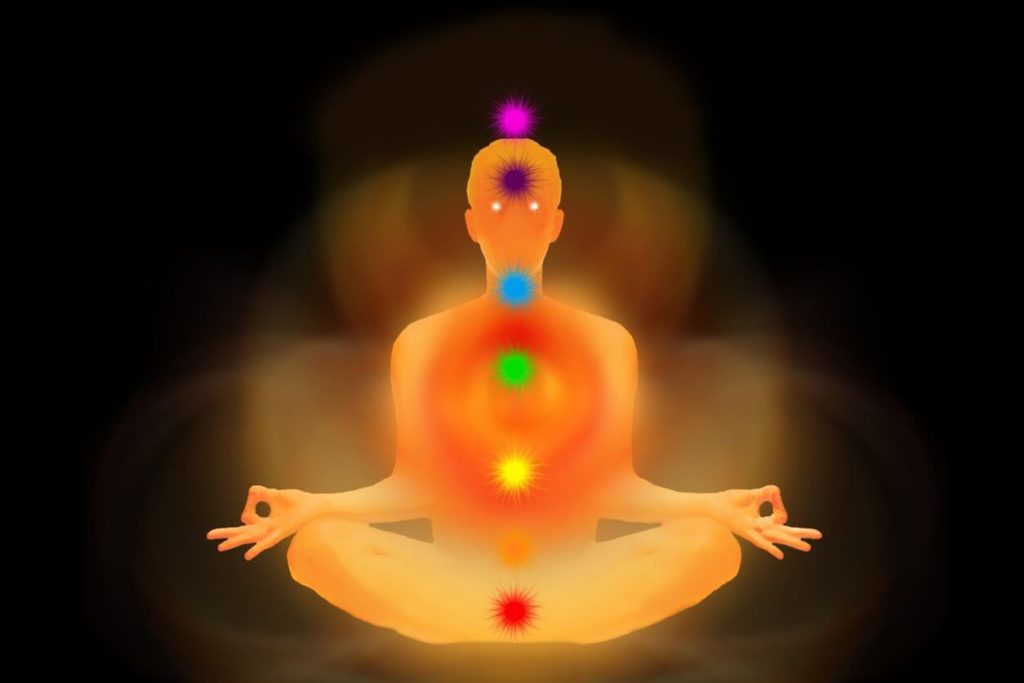Meditation position: the right posture in 7 points!
Written by: Loris Vitry (holistic coach)
Validated by: Cathy Maillot (Osteopath)
Caution: If you have any medical questions or concerns, please speak to your doctor. Even if the articles on this site are based on scientific studies, they do not replace professional medical advice, diagnosis or treatment.

The 7-point meditation posture is a position for doing a meditation that leads to mental calm.
To achieve the latter, it is imperative to purify the mind and rid it of the psychological obstacles that are there.
Posture is an important aspect of meditation and this 7-point position helps you to have good posture.
Find out how to take this position through a comprehensive overview.
The posture in 7 points: an inspiration from the Vairocana model
The 7 point posture is also called the 7 techniques of Vairocana.
Vairocana means the great light and it is one of the great deities of the schools of Buddha which follow the Tantric tradition.
Vairocana occupies the first place in the rank of the Buddhas of meditation.
He thus has a great title at the level of the Buddhist pantheon.
Vairocana is often found in mandalas.
It is symbolized by a lord with four faces and having the ability to look in all directions.
Omniscience is therefore one of its main characteristics.
Vairocana is a deity who is related to the sun and therefore is seen to be the Buddha of light.
It is the illustration of the wisdom relating to the knowledge of the law of Dharma.
Vairocana is the symbol of awakening, truth and Dharma.
What are the principles of the 7-point posture?
The 7-point posture is a solution to better combat stress during meditation.
This posture comes from a teaching about Mahamudra de Gampopa and is found in the preliminaries of the collection called “the precious rosary”.
The 7 points are actually techniques for doing a good meditation and evacuating all the accumulated stress.
This posture in 7 points makes it possible to understand the physico-psychic process and to obtain mental calm.
The latter is summed up in two words which are stability and clarity.
Stability refers to the restriction or elimination of disturbing gestures relating to the emotional mind.
The latter is thus stabilized by avoiding all types of distractions.
Clarity, meanwhile, refers to optimal vigilance barring access to sleep.
The emotional mind is clarified so that it is focused on the medium of meditation.
There are different levels of stability and clarity that you may experience with practice.
According to Buddhist tradition, the 7-point position guarantees a good circulation of energy in the mind and body.
In other words, it optimizes blood circulation and that of IQ.
You can achieve enlightenment through this posture provided that it is done well.
How to do the 7-point posture?
The 7-point posture technique comes in 7 steps.
Point 1: straightening of the body and the spine
It is about taking the posture of the perfect balance of Dorje.
The latter designating “lightning” refers to the scepter of Lamaism.
The Dorje posture designates the position serving for balance to the mind and body and it allows regulation of body heat.
The spine should be straight like an arrow, and the vertebrae should be aligned like stacked coins.
The upright back position as well as the shoulder posture refer to the water element and have an impact on anger control.
Point 2: head straightening
The head should adopt a straight position as if it were tied with a thread.
The chin should be tilted lightly so that the top of the head (Bai Hui) is brought to the level of the vertical of your body.
The fact that the neck is slightly bent allows alignment of the cervical vertebrae.
Thanks to this flexion, the celestial energies can easily penetrate through the top of the skull.
The position of the neck refers to the element of fire which allows control of attachment and desire.
Point 3: the tongue against the palate
The tongue should be placed at the level of the upper palate.
This makes it possible to contain the energy within a loop called the celestial circulatory loop and to make a concentration of this energy in the mother channels.
These are the source of food for the marrow (spinal cord, bone marrow, brain) and meridians.
The position of the tongue against the palate allows the circulation of vital energy to the level of the median nerve.
All the breaths, as well as the famous 5 breaths, enter this nerve and the tranquility of the body will thus be able to radiate.
The position of the tongue on the palate designates the air element and allows one to have mastery over ignorance.
Point 4: opening of the chest and relaxation of the shoulders
This involves pushing the shoulders back slightly to promote the opening of the chest.
One should not, however, overdo it, which means that the torso should not be literally bulging.
The shoulders should adopt a low and relaxed posture.
Opening the chest optimizes the flow of energy in the heart by opening the heart plexus.
The latter being the heart chakra.
It promotes the opening of it to love and happiness.
Point 5: Buddha posture
You have to place your feet and cross your legs.
This posture is called the lotus or half-lotus position.
Crossing the legs allows for control of inspiration and also has an impact on controlling jealousy.
Energy builds up inside in the central channel before it transforms into waking energy.
Point 6: placing the hands below the navel
The hands should be open with the palms facing the sky.
The hands should be placed just below the navel.
The right hand should rest on the left hand and the thumbs should be brought together.
The latter are thus placed at the bottom of the abdomen.
The little fingers are placed on the upper part of the pubic symphysis, that is to say above it.
The position of the hands at the level of the lap refers to the earth element and helps to regulate pride.
Point 7: concentration of the gaze
The gaze should be fixed and fixed, whether the eyes are open or closed.
Half-closed eyes are highly recommended, because closed eyes often evoke relaxation and if they are open, this is synonymous with restlessness.
This concentration of the gaze also concerns the 3rd eye which must focus on the inside of you.
In conclusion, the 7-point posture is an effective meditation technique based on Buddhist precepts.

